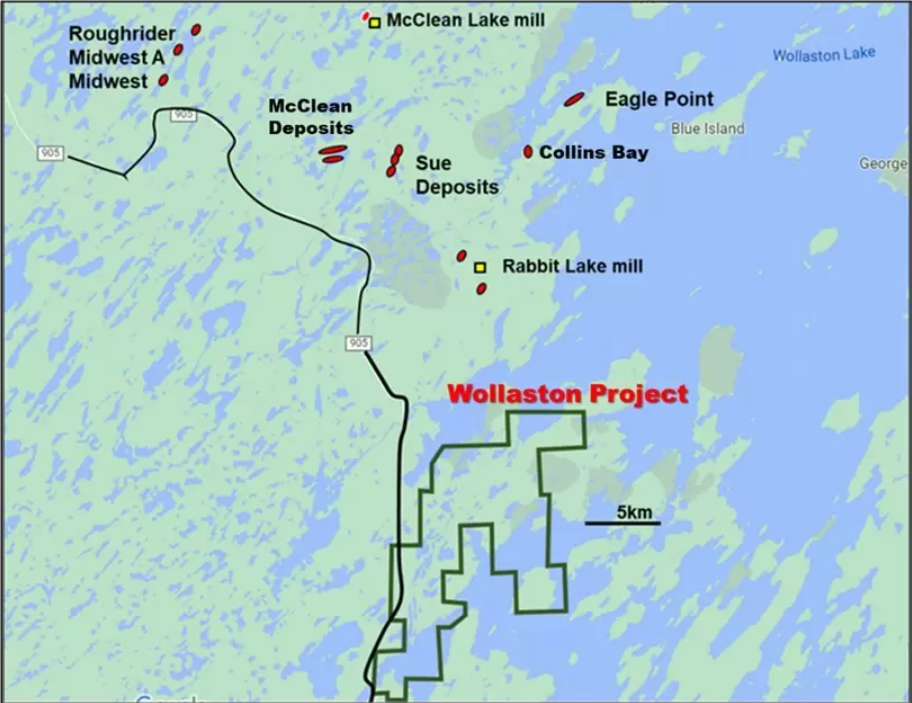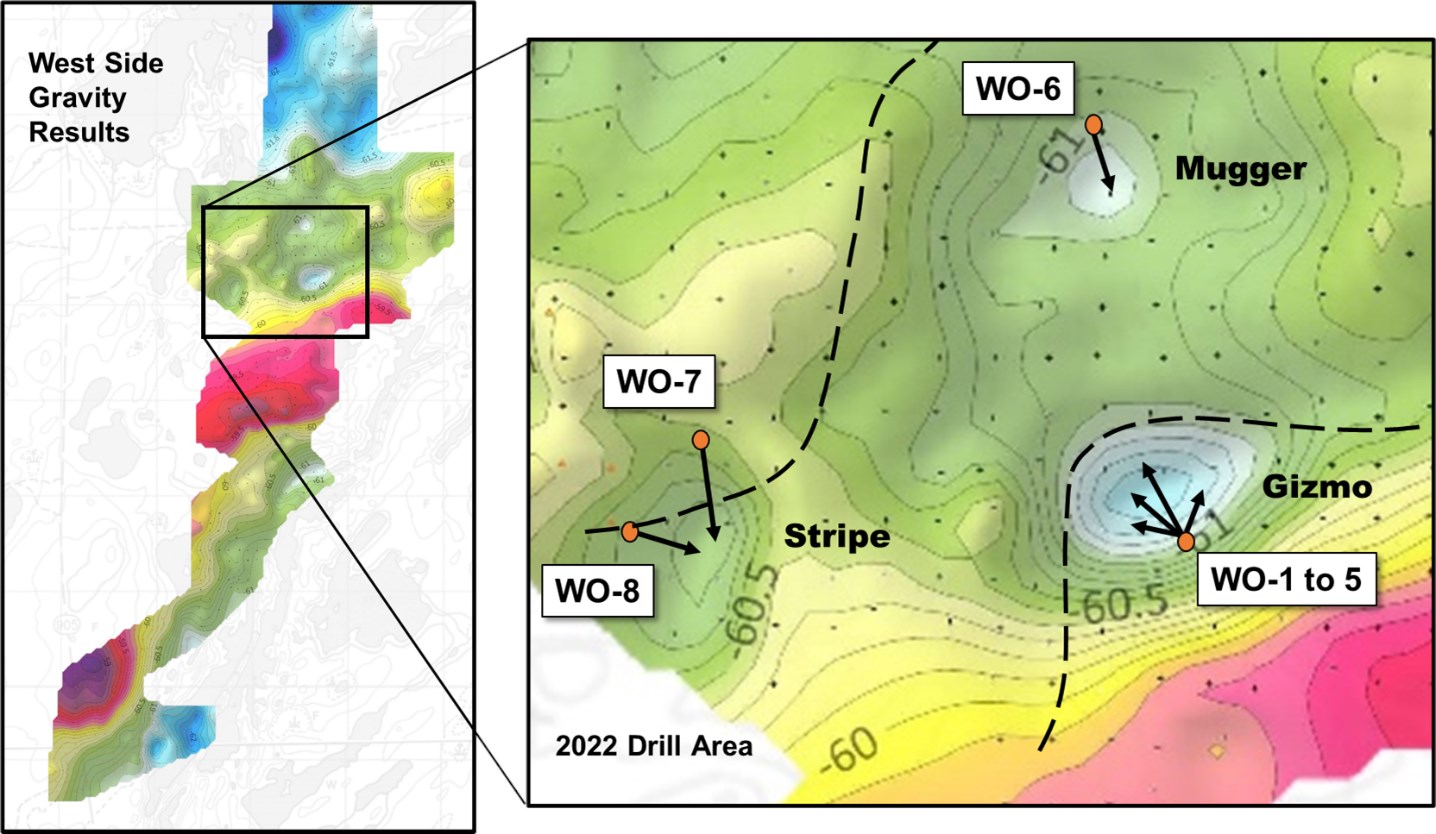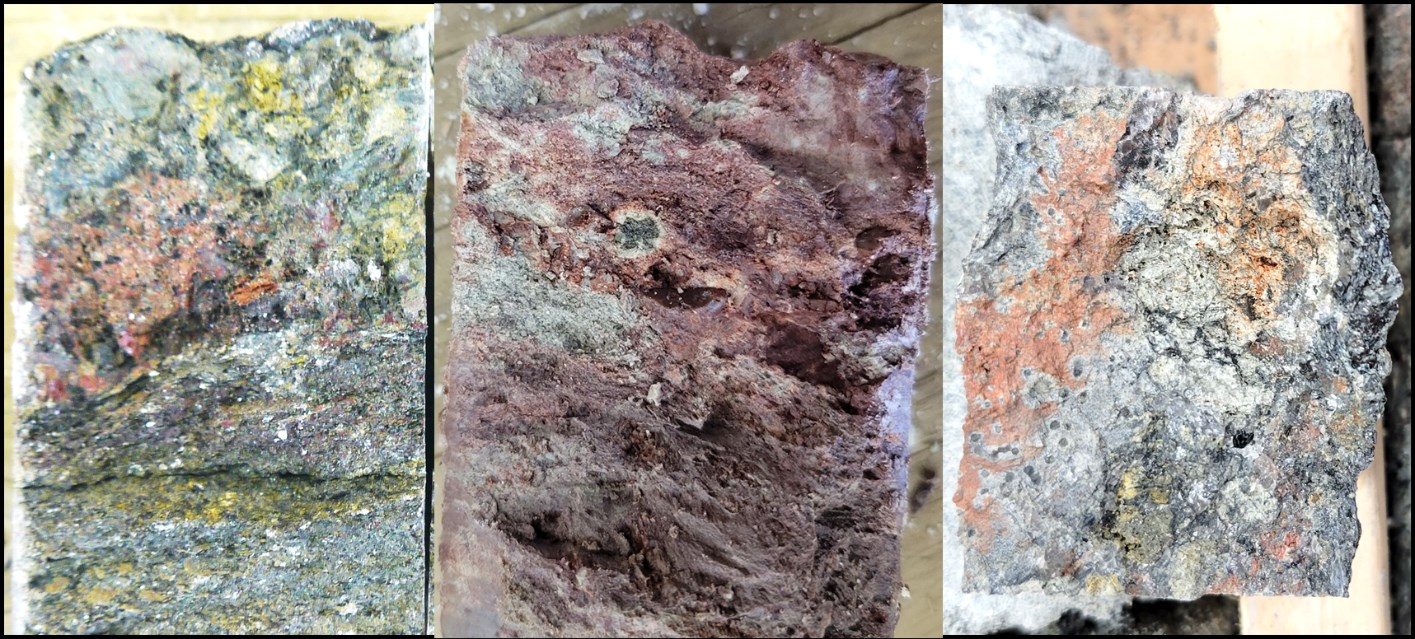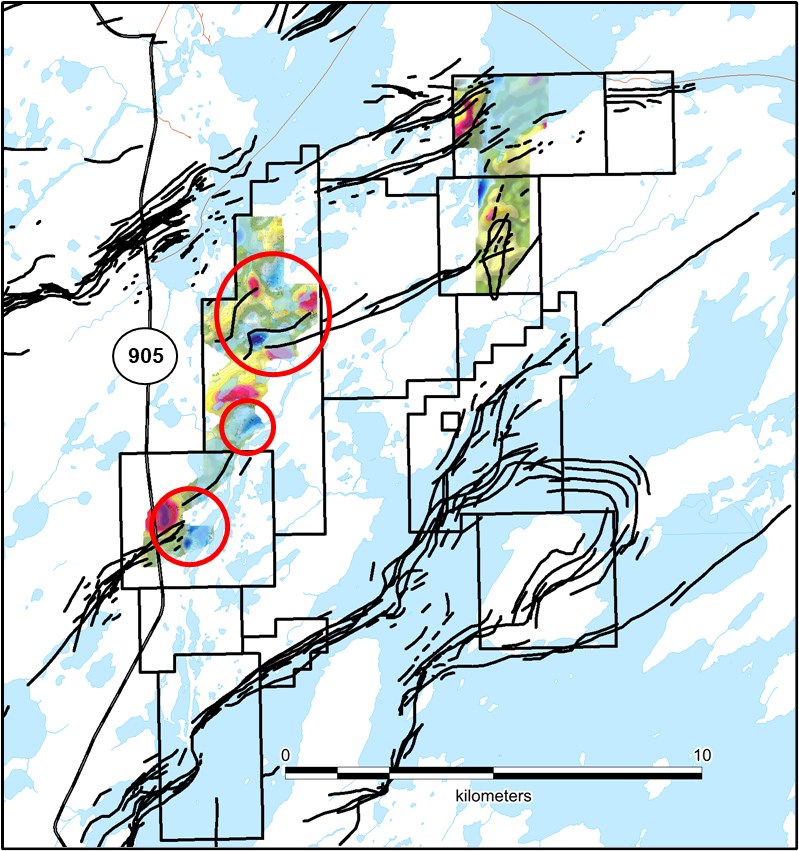Forum Energy Metals (TSXV:FMC) has announced that drilling has been completed at eight holes for a total of 2,062 metres at the Wollaston uranium Project. The 100%-owned project is located 10 kilometres southeast of the Cameco Rabbit Lake mill, plus 30 kilometres southeast of the Orano/Denison McClean Lake mill.
Ken Wheatley, Vice President of Exploration at Forum Energy Metals commented in a press release: “This is a tremendous start on this project in an area of the Athabasca Basin that is prolific with several uranium deposits in close proximity to two uranium mills. To intersect uranium mineralization in an area of very strong alteration in the first pass drill program confirms that this property has much potential for a near surface, basement hosted unconformity deposit with rich grades of uranium.”
Forum has uranium, copper, nickel, and cobalt projects located in Saskatchewan, Canada. It also holds a uranium land position in the northern province of Nunavut as well as a strategic cobalt land position in the Idaho Cobalt Belt, United States. Forum is currently exploring its multiple properties with a focus on the Wollaston uranium project in Saskatchewan.
Figure 1: Location of Forum’s Wollaston Uranium Project.

Highlights from drilling are as follows:
- Anomalous radioactivity in four holes on one of three targets drilled.
- Weak uranium mineralization was seen in core with associated bleaching, secondary hematite and minor uranium oxides in 4 holes.
- Follow-up drilling and further gravity surveys strongly recommended.
First Target – Gizmo
The drill program tested 3 zones of gravity lows, two of them in combination with EM conductors. The first gravity low (Gizmo) measuring 300 metres long and 200 metres wide was tested by 5 holes and returned very strong alteration of the rocks immediately beneath the overburden at 40m and continuing to about 150m depth (Figure 2). Weak uranium mineralization was seen in core with associated bleaching, secondary hematite and minor uranium oxides in several of the holes (Figure 3). A downhole radiometric probe* detected anomalous radioactivity in 4 out of the 5 holes:
- 1,540 counts per second (cps) at 187.8 metres (m) in DDH WO-1
- 1,752 cps at 128.1m in DDH WO-2
- 4,620 cps at 161.2m in DDH WO-2
- 2,002 cps at 105.3m in DDH WO-3
- 3,320 cps at 111.2m in DDH WO-4
* a Mount Sopris down-hole logging system (5MXA-1000 matrix, 4MXA-1000 winch and 2PGA-1000 gamma probe) was used for the radiometric probing.
Further drilling is recommended on this target in areas that could not be reached this winter, testing an EM conductor that crosses the northwest part of the gravity low (see Figure 2).
Second and Third Targets – Mugger and Stripe
The sixth hole tested a weak gravity anomaly (Mugger) that returned relatively fresh calc-silicates and has been eliminated. The final two holes tested a third gravity anomaly (Stripe), also with an associated EM conductor that intersected a series of faulted units with associated gouges and local alteration. These holes have been heavily sampled and sent for assay.
Future Plans
Forum sent 393 samples of the drill core to the Saskatchewan Research Council for geochemical analysis and results are expected in a month. The Company is reviewing its plans for further exploration of the property, including drilling of the Gizmo target. Figure 4 illustrates areas that have had gravity surveys completed this past year. Excellent targets remain on the west side close to the highway, which will be investigated first before moving to the eastern targets. Further airborne and ground geophysical surveys are being considered to fully test the regional potential of the property.
Figure 2: Drill Hole Locations on Gravity Background.

Figure 3: Uranium mineralization on core returned from WO-2 and WO-4

Figure 4: Gravity surveys completed over structural zones and EM conductors




 Follow us on Twitter
Follow us on Twitter Become our facebook fan
Become our facebook fan










Comments are closed.